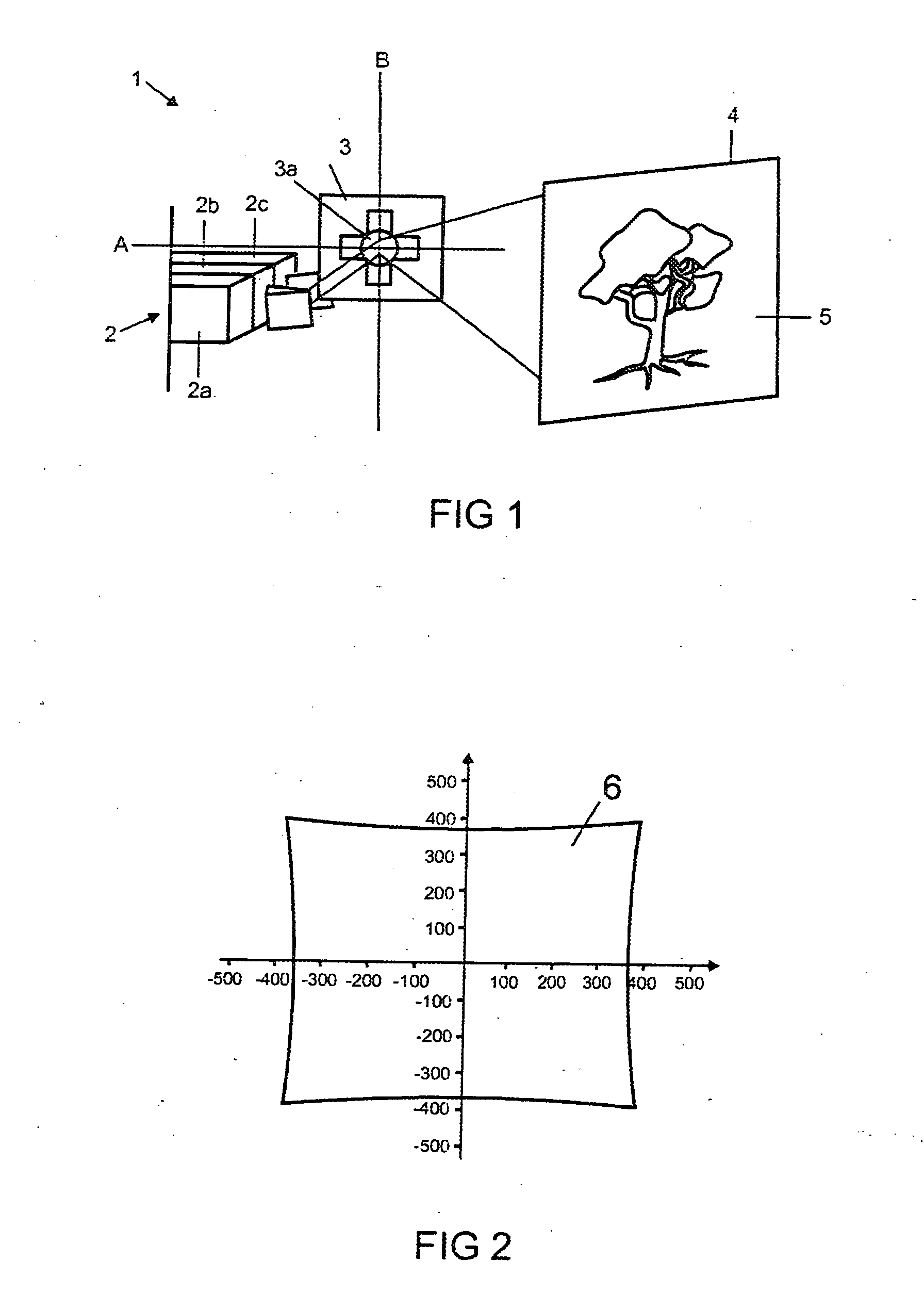Projector for projecting an image and corresponding method
a projector and projector technology, applied in the field of projectors for projecting images, can solve the problems of large light loss, fundamental impairment of the brightness and/or quality of the projected image, and greatly impaired resolution of the projected image, and achieve the effect of low distortion, cost-effective and compact realization
- Summary
- Abstract
- Description
- Claims
- Application Information
AI Technical Summary
Benefits of technology
Problems solved by technology
Method used
Image
Examples
Embodiment Construction
[0046]The exemplary embodiments outlined in greater detail below represent preferred embodiments of the present invention, yet the invention is not restricted to the exemplary embodiments illustrated in the drawings. All features described below and illustrated in the drawings can be combined with one another in diverse ways.
[0047]In the figures, identical or functionally identical elements are provided with identical reference symbols.
[0048]A projector 1, in the present case a laser projector, in accordance with the prior art as illustrated in FIG. 1 comprises a light source 2 which in the present case comprises a plurality of diode-pumped solid-state lasers (RGB laser source). The light source 2 has the task of generating a respective light bundle for three colors, red, green and blue, modulating these light bundles and combining them to form a light bundle, in the present case a laser bundle, which contains all the image information. For this purpose, the light source 2 comprises...
PUM
 Login to View More
Login to View More Abstract
Description
Claims
Application Information
 Login to View More
Login to View More - R&D
- Intellectual Property
- Life Sciences
- Materials
- Tech Scout
- Unparalleled Data Quality
- Higher Quality Content
- 60% Fewer Hallucinations
Browse by: Latest US Patents, China's latest patents, Technical Efficacy Thesaurus, Application Domain, Technology Topic, Popular Technical Reports.
© 2025 PatSnap. All rights reserved.Legal|Privacy policy|Modern Slavery Act Transparency Statement|Sitemap|About US| Contact US: help@patsnap.com



